Features of caring for an upstart zephyranthes flower at home
Like a breath of clean air - the bloom of this rustic, at first glance, small-bulbous. Zephyranthes is translated from Greek as "western breeze", and the people often call the plant a marshmallow, rain lily, indoor daffodil or crocus, and also an upstart - for the rapid appearance of peduncles. Modest delicate flowers appear suddenly, captivating with a touching grace, and just as quickly fade, freeing the podium for their fellows. Caring for and growing zephyranthes at home suggests that unobtrusive minimum, which will not take much time, but will undoubtedly please.
Origin and description
The homeland of the bulbous perennial from the Amaryllidaceae family is the temperate regions of Central and South America, in particular Argentina and the West Indies, as well as Chile near the northern outskirts of Patagonia.
In the genus Zephyranthes of the Amaryllis family, there are about 40 species of medium-sized herbaceous plants.
Most of them have a small bulb (about 2.5 cm in circumference), oval or round, with scarious outer scales of a dark brown, almost black color. Leaves in a basal rosette are flattened subulate, fleshy, from 20 to 45 cm in length, rich green. Peduncles appear on the side of the outlet very quickly. Flowers are funnel-shaped, open, single, about 8 cm in diameter. Their predominant colors are white, pink, yellow, two-tone white-pink. The fruit is a capsule.
Types of zephyranthes
About 10 varieties of rain lilies are grown in culture. Here are the most popular ones.
- Atamasco - undersized herbaceous perennial with narrow linear dark green leaves and short - up to 25 cm - peduncles. Flowers are white or pink, about 8 cm in diameter, with proper care they appear from April to August.
- White, or snow-white - a medium-tall plant with a small bulb completely submerged in the soil mixture. Linear dark emerald leaves reach a length of 40 cm. Flowers are pale white, about 6 cm in circumference, bloom from July to September-October. The plant is suitable for outdoor cultivation.
- Golden - resembles the previous species, but the flowers are larger and have a different shade - bright yellow, open in May-June.
- Large-flowered pink - miniature form with belt-like foliage no more than 12 cm, peduncles with large - up to 10 cm in diameter - pink flowers are formed in early summer.
- Lindley - medium-sized species with pink, about 7 cm in circumference, flowers "popping out" from July to August.
Transplant and substrate
Small bulbs of zephyranthes are planted in shallow flower containers with a diameter of 7-9 cm, several pieces - 5-6, or even 8-12. Solitary plants do not create the same decorative effect during flowering that the curtain is of medium density. A flower transplant is required annually - in autumn or spring before flowering or after it.
For growing a small-bulbous flower, almost any soil mixture is suitable, in which the pH value ranges from 5.8-6.
Substrate composition:
- 1 part of humus;
- 1 part of sod land;
- 1 part sand.
The following components are also possible:
- 2 parts of sod land;
- 2 pieces of leafy land;
- 2 parts of humus;
- 1 part river sand.
A drainage layer of expanded clay or pebbles is laid at the bottom of the pot.
Advice
Bulbs with a short neck are recommended to be completely buried in the ground, and the long neck of the bulbs of certain types of zephyranthes is left to peek out about 0.5 cm above the ground level.
The first couple of weeks after transplanting, they try not to flood the plants too much so that the bulbs rooting in the new soil mixture do not rot.
Basic rules for the care of zephyranthes
The upstart flower is rightly considered a non-capricious plant in care, it is boldly started by flower growers with little experience in growing indoor plants.
Comfortable placement and lighting
Pots with marshmallows are placed on the windowsills of the eastern and western windows, in the northern ones the plant develops worse. The southern exposure affects the condition of the leaves - in direct sunlight, they wither, and their tips turn yellow. In general, the plant loves light, but diffused in the summer. In the autumn-spring period, it feels quite well on the southern windows, but at noon it is better to hide the zephyranthes behind a tulle curtain.
In the warm months, containers with marshmallows are taken out into the fresh air, even planted in the garden, but located in a section of the estate protected from wind and rain. Planting in pots and returning back to the premises is done before the onset of the first frost.
Temperature regime
The optimum temperatures for the small bulbous plant, accustomed in natural conditions to a moderately warm environment, range from 16-25 degrees Celsius. The upstart flower does not like intense heat - if flowering occurs at this time, then it is very short. In winter, in a 2-3 month rest period, a cooler content is allowed - from 8 to 12 degrees. If the plant does not retain leaves at this time, watering stops, and the thermometer readings in the room are allowed less, but not lower than zero.
Watering and humidity
Zephyranthes, even in the midst of flowering, requires discreet moisture. Constant dampness of the substrate leads to rotting of the bulbs, therefore, between the next waterings, the top layer of the earthen coma with the bulbs located in it should dry out completely.
During the dormant period, if the plant does not shed leaves, the frequency and abundance of watering is necessary such as only to maintain vital activity. In the case of complete drying of the foliage, watering is stopped altogether, only occasionally the soil surface is moistened from a spray bottle so that the bulbs do not die.
Watering is resumed in spring at the first signs of growth.
Advice
The rest period, if desired, is shifted to any of the seasons. To do this, stop watering and wait for the plant to free itself from leaves. Then the zephyranthes are placed for some time in a less illuminated cool place, and then the bulbs are either transplanted into a new substrate, or simply watered abundantly - and the buds will not slow down with "jumping out".
Air humidity for zephyranthes does not really matter, however, the plant favorably perceives spraying in hot summer weather.
Top dressing
From early spring to September inclusive, the plant is fed twice a month with special fertilizers for flowering plants in the proportions indicated in the manufacturer's instructions. Zephyranthes is extremely responsive to organic fertilizers. In the spring it is watered with mullein solution in a ratio of 1:10. Such dressings contribute to more active flowering.
Reproduction
Zephyranthes in abundance forms daughter bulbs, which are separated from the mother plant during transplantation and planted using the basic rules of agricultural technology for adult plants.
Growing Zephyranthes using seed propagation is much more difficult. In indoor conditions, the plant will need artificial pollination. Rain lily seeds quickly lose their germination, so sowing them in a universal substrate is desirable freshly harvested, sparingly spreading them on the surface and only lightly sprinkling them with soil.It is advisable to cover the containers with a film on top and put them in a warm (at least 22 degrees above zero) and bright place. Seedlings are very susceptible to rot, so they need stable and moderate moisture. After several picks, they are seated in separate containers in compliance with the landing rules for adult marshmallows. Plants obtained by the seed method bloom only in the 3-4th year.
Growing problems
Florists often complain - why does the upstart not bloom? There are several reasons:
- the plant is planted in a pot that is too spacious;
- the temperature and irrigation regime is violated during the rest period;
- lack of lighting;
- deep planting of bulbs;
- excess fertilization - in other words, overfeeding.
Among other mistakes in care, rotting of the bulbs after excessive moisture is observed, as well as pallor of the leaves, which happens from lack of lighting.
Of the pests on zephyranthes, parasitic insects are found that infect many indoor plants - scale insects, whiteflies and spider mites. Sometimes on the upstart flower, there is also a specific, characteristic of bulbous amaryllis worm, which damages the bulbs so that the plants are difficult to save, unless you notice and treat the soil with a solution of any insecticide in time.
An inconspicuous, seemingly, outwardly and easy-to-care zephyranthes is able, with its instant flowering, to present an unexpected surprise that raises the mood and creates a small holiday in the house.
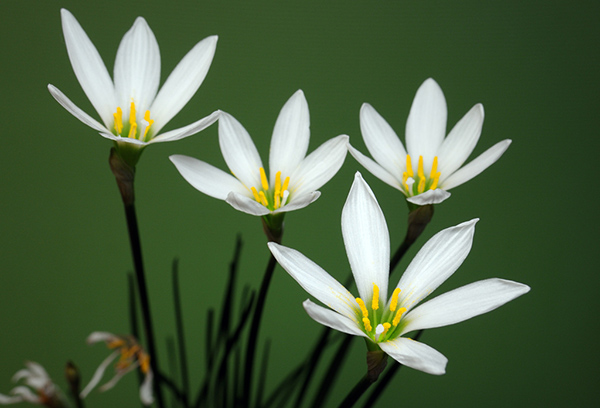
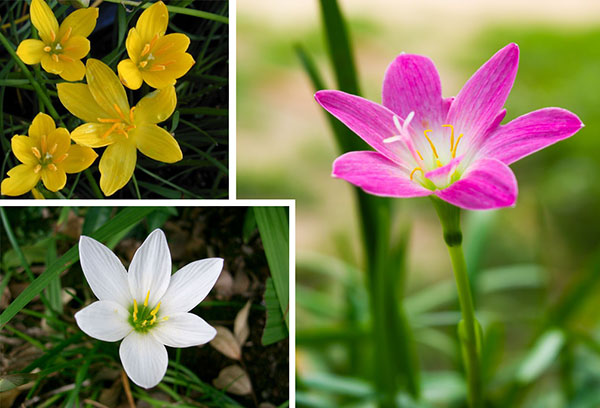
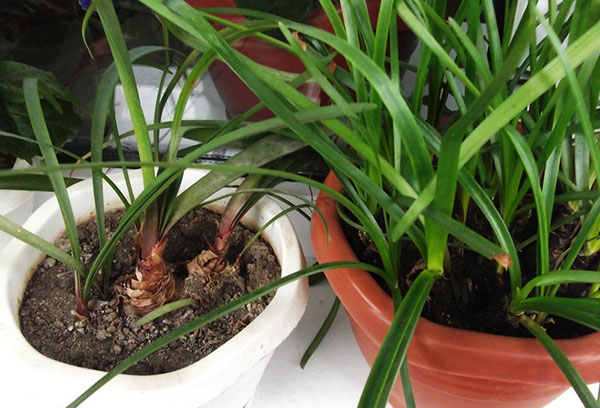
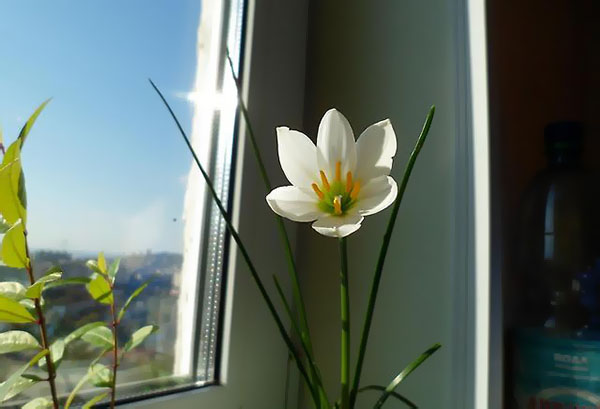
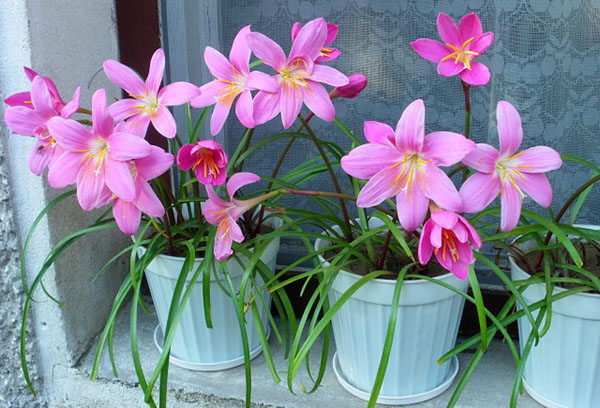
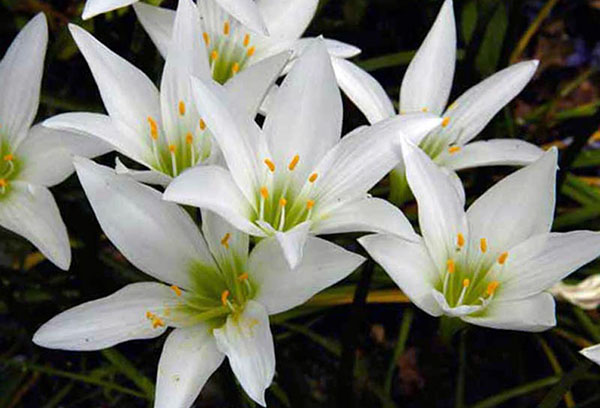
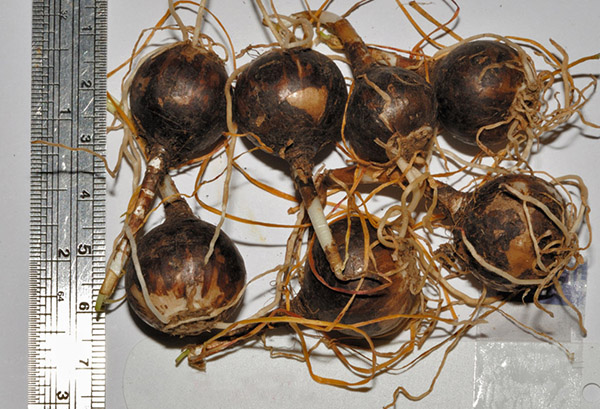
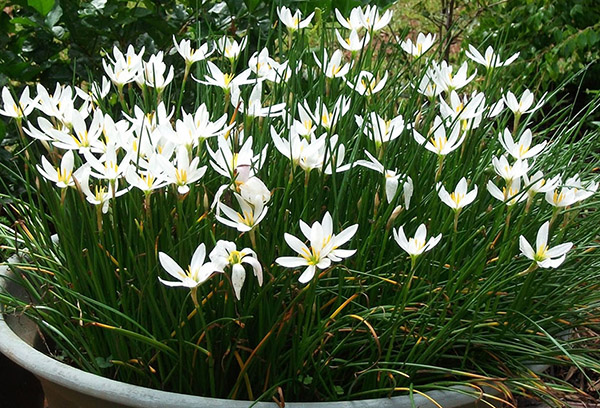
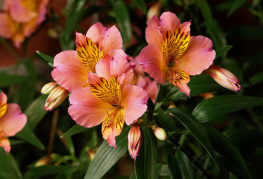
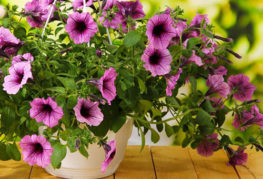
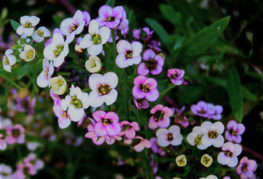
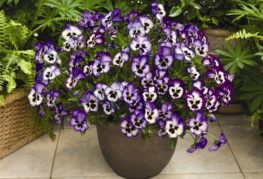

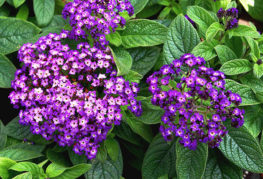
and will be published shortly.